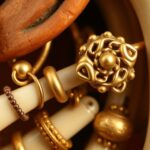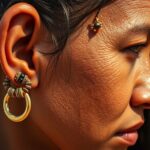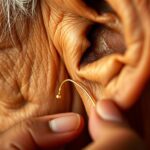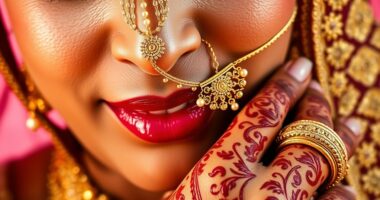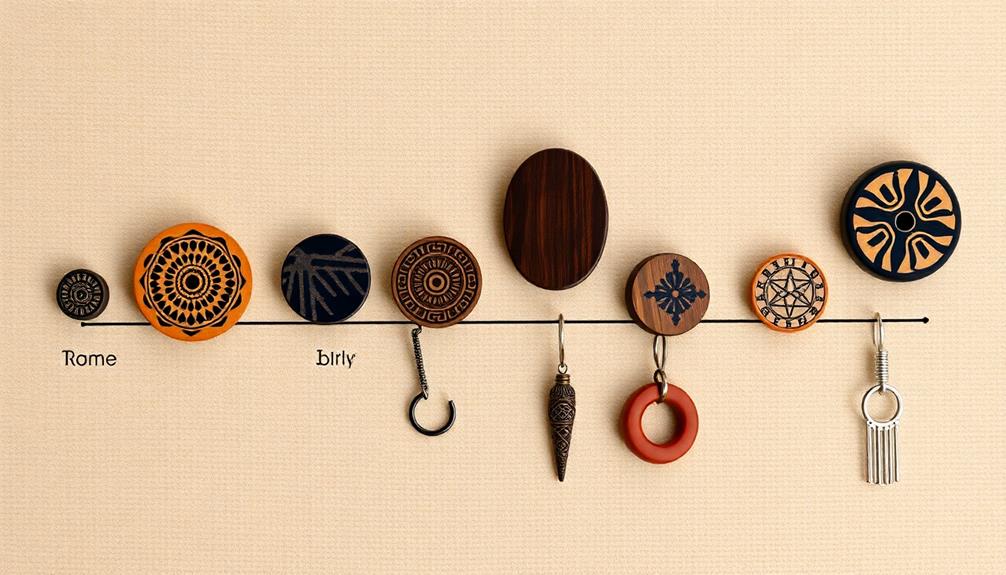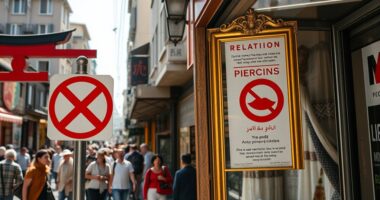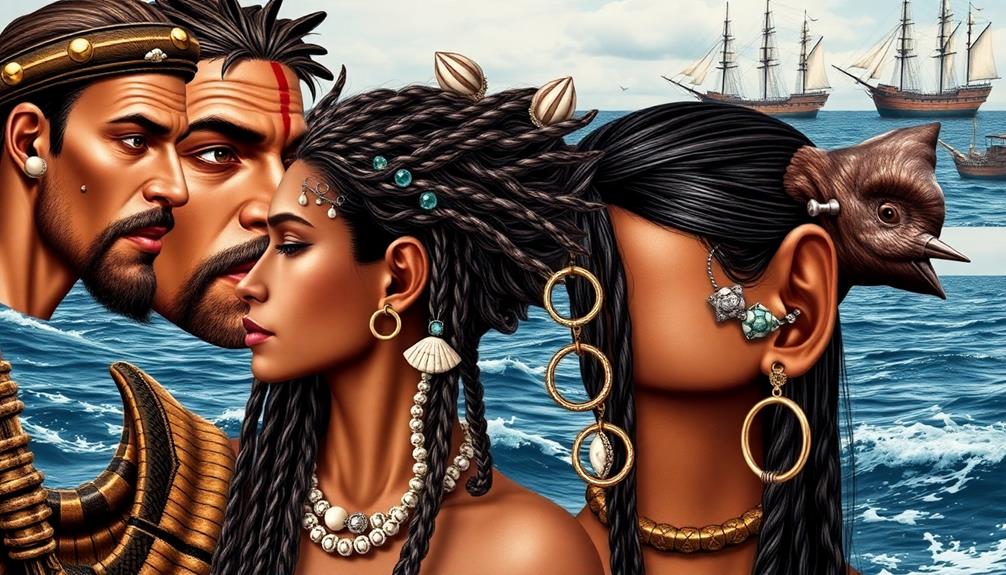In traditional Polynesian societies, piercings are much more than body adornments; they symbolize your social status and cultural identity. You see, they mark significant life milestones, especially during rites of passage that transport you from childhood to adulthood. Each piercing, whether on the ear, nose, or lip, carries deeper meanings tied to heritage and ancestry. The materials used, often bones and shells, connect you spiritually while showcasing your lineage. Understanding these aspects enriches your appreciation of the cultural practices involved. The intricate relationship between piercings and spirituality reveals a fascinating world that goes beyond mere aesthetics.
Key Takeaways
- Piercings signify social status, identity, and lineage within traditional Polynesian societies, reflecting one's rank and familial heritage.
- Piercings play a crucial role in rites of passage, marking transitions from childhood to adulthood through ceremonial practices.
- Natural materials like bone and shell are used in piercings, connecting them to cultural identity and ancestral beliefs.
- Each type of piercing, such as ear, nose, and lip, carries specific meanings related to spirituality, community bonds, and individual roles.
- Gender roles influence piercing practices, with males typically undergoing more extensive modifications to symbolize strength and status elevation.
Historical Context of Piercings
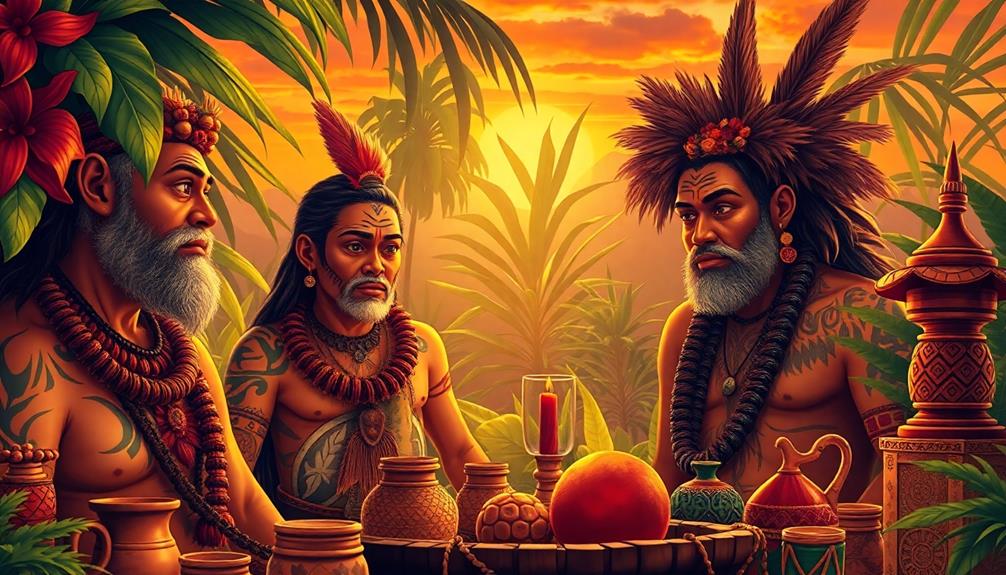
Piercings in traditional Polynesian societies hold deep historical significance, reflecting social status and identity. In these cultures, piercings served as important markers during rites of passage, especially during coming-of-age ceremonies. When you underwent such a shift, your piercings symbolized not just your entry into adulthood but also your acceptance by the community.
Ancient traditions dictated the styles and placements of piercings, with ear and nose piercings being particularly prevalent. Specific designs could denote rank and prestige, especially among tribal leaders and warriors. When you sported certain styles, everyone recognized your lineage and familial connections, reinforcing your position within the social hierarchy.
The materials used for these piercings were often natural, such as bones or shells, believed to carry spiritual significance. These elements connected you to your ancestors, enhancing your identity within the culture.
Furthermore, Polynesian piercings intertwined with spiritual beliefs, as people believed that specific designs could offer protection and blessings from deities. By embracing these ancient traditions, you not only celebrated your heritage but also acknowledged the cultural significance of piercings in your life.
Cultural Significance of Body Adornments
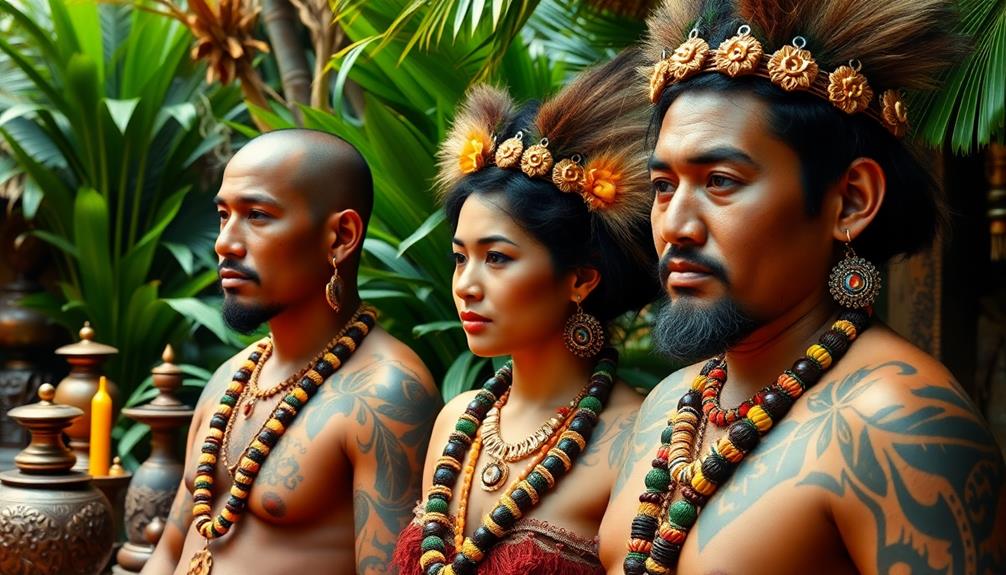
In traditional Polynesian societies, body adornments like piercings play an essential role in expressing cultural identity and social status. These adornments are crucial markers of social roles and family heritage, reflecting your lineage and position within the community. The cultural significance of piercings goes beyond aesthetics; they symbolize personal identity and community belonging.
Here's a closer look at the role of piercings in Polynesian cultures:
| Aspect | Description |
|---|---|
| Rites of Passage | Piercings often mark your change into adulthood, symbolizing new responsibilities. |
| Spiritual Connection | Body adornments connect you to your ancestors and cultural beliefs, reinforcing spirituality. |
| Design & Materials | Many piercings incorporate specific designs inspired by nature and ancestral stories, holding deep meanings. |
| Heritage Preservation | They preserve cultural heritage, passing down traditions through generations. |
Through these practices, piercings become a powerful form of self-expression, showcasing not just beauty but also the rich tapestry of Polynesian identity.
Rituals and Rites of Passage
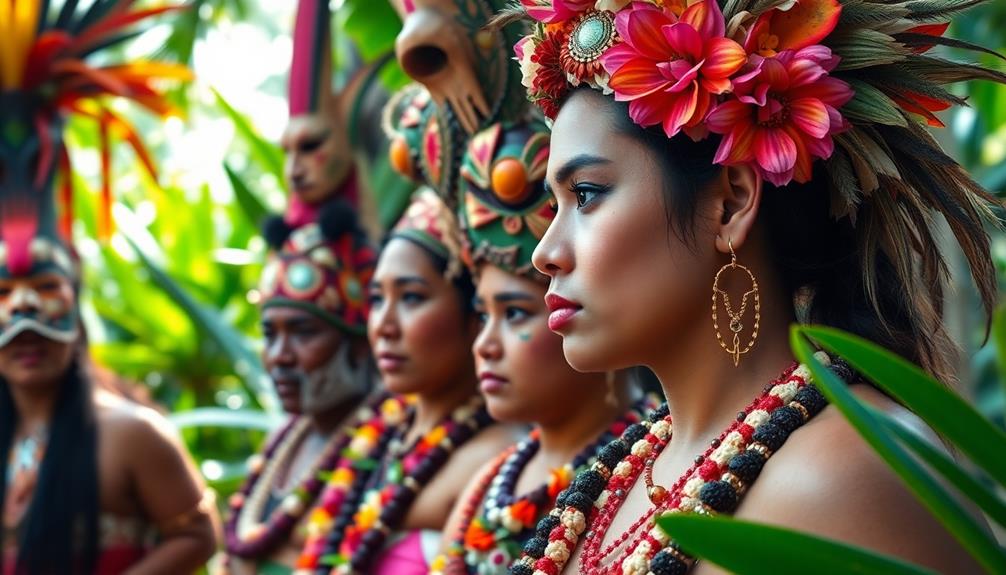
In Polynesian societies, piercings play an essential role in rite of passage ceremonies, marking your shift into adulthood.
These rituals often involve spiritual practices, where chants and offerings honor ancestors while enhancing your connection to the community.
Understanding the cultural significance of these piercings can deepen your appreciation for the rich traditions that define these important life events.
Cultural Significance of Piercings
Celebrating life changes through piercings holds deep cultural significance in Polynesian societies. When you undergo a rite of passage, such as moving into adulthood, piercings become a powerful symbol of this important life change. Specific practices, like ear and nose piercings, not only enhance your identity but also signify your familial heritage and social roles within the community.
The act of getting pierced is often tied to rituals that connect you to your ancestors, reinforcing the shared beliefs and values of your culture. These ceremonies emphasize communal participation, where family and friends come together to support you as you embrace your new status. This collective experience strengthens social bonds within the community, creating a sense of unity.
Moreover, piercings can visually represent your social status. Higher-ranking individuals often wear more elaborate body modifications, showcasing their position within the society. This aspect of piercings highlights the intricate relationship between personal identity and community recognition, demonstrating how deeply embedded these practices are in the fabric of Polynesian culture.
Through piercings, you honor your heritage while maneuvering through the changes of life.
Rite of Passage Ceremonies
Piercings play a vital role in rite of passage ceremonies within Polynesian societies, marking significant milestones as individuals move from childhood into adulthood. These initiation ceremonies are deeply rooted in cultural beliefs and highlight the connection to ancestry and social status.
During these rituals, you'll likely witness:
- Elders guiding the process: Spiritual leaders often participate, ensuring cultural sensitivity throughout the ceremony.
- Specific types of piercings: Ear and nose piercings are commonly performed, accompanied by traditional chants and dances.
- Prescribed healing rituals: Aftercare practices emphasize the importance of your journey and your new role within the tribe or family.
Each piercing signifies not only a personal transformation but also reinforces communal bonds and cultural identity. The act is steeped in meaning, as it connects you to your heritage while elevating your status within the community.
This process is more than just a physical change; it's a profound acknowledgment of the responsibilities and privileges that come with adulthood. Engaging fully in these rites allows you to embrace your place in the lineage and social fabric of your society.
Spiritual Beliefs and Practices
Many Polynesian societies view spirituality as an essential part of everyday life, intertwining rituals and rites of passage with deep cultural significance. Piercings play a crucial role in these ceremonies, marking your change from childhood to adulthood. This transformation isn't just physical; it's deeply spiritual, linking you to your ancestors and heritage.
During these coming-of-age ceremonies, you might find yourself surrounded by your community, participating in rituals that include offerings and prayers to honor your lineage. Each piercing, whether it's an ear or nose piercing, is believed to carry protective qualities, safeguarding you from evil spirits and ensuring your well-being.
The act of piercing is often a communal event, reinforcing the bonds within your community and celebrating shared cultural identity. As you undergo this spiritual journey, each piercing becomes a symbol of your growth and responsibilities.
You're not just altering your appearance; you're partaking in a sacred practice that recognizes your body as a vessel for the spirit. This connection between spirituality and physical transformation solidifies your place within the community and honors the traditions that have shaped your identity.
Social Status and Identity
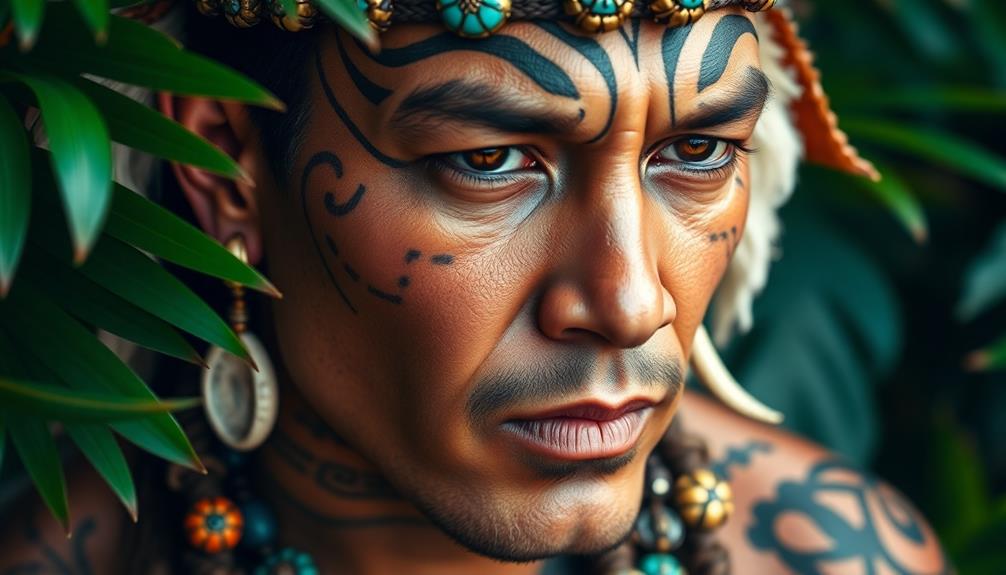
In Polynesian societies, piercings serve as a powerful symbol of rank, marking your status within the community.
When you undergo a rite of passage that includes body piercings, you're not just altering your appearance; you're also reinforcing your identity and place in the social hierarchy.
Understanding this connection helps you appreciate the cultural significance behind each piercing.
Symbol of Rank
Throughout traditional Polynesian societies, body piercings served as powerful symbols of rank and social status. The number and type of piercings reflected your position within the community, with high-ranking chiefs and nobility often sporting multiple adornments. These piercings weren't just decorative; they connected individuals to their ancestral heritage and reinforced societal hierarchy.
- Specific piercings, like those on earlobes, enhanced beauty and divine favor.
- Piercings acted as visual markers of identity, highlighting familial lineage and tribal affiliations.
- The cultural significance of piercings persists today, embodying pride in one's heritage.
Understanding the role of piercings in these societies requires cultural sensitivity. It's crucial to recognize that they're more than mere fashion statements; they represent identity and social status deeply rooted in tradition.
Rite of Passage
Piercings in traditional Polynesian societies mark essential rites of passage, signaling the change from childhood to adulthood and helping to establish one's social identity. As you undergo this transformative journey, piercings become a powerful symbol of your new status within the community. Each piercing, whether in your ears or nose, carries profound cultural significance, linking you to your ancestors and reinforcing familial ties.
The process is more than just a physical alteration; it's a ritual filled with blessings and communal celebrations, emphasizing the importance of your transformation. Higher-ranking individuals often adorn themselves with more elaborate piercings, showcasing their elevated social status and reinforcing the hierarchy within the tribe.
This practice not only highlights your position but also serves as a reflection of your personal journey and accomplishments. Through piercings, you can express your identity and the societal role you play within your community. Each mark tells a story, connecting you to your heritage while illustrating your path towards adulthood.
Embracing these rites of passage through piercings solidifies your place in the rich tapestry of Polynesian culture, celebrating both individual and collective identity.
Types of Traditional Piercings

Exploring the types of traditional piercings in Polynesian societies reveals fascinating cultural significance and artistry.
These piercings are deeply connected to identity, maturity, and social status, showcasing the rich heritage of the communities.
- Ear Piercing: Common across the islands, the number and size of ear piercings often reflect an individual's lineage and rank. You might notice elaborate designs that indicate both personal and familial history.
- Nose Piercings: In some cultures, nose piercings symbolize a connection to ancestry and spirituality. They serve as a mark of identity, helping you understand the wearer's place within their community and their respect for their forebears.
- Lip Piercings: Lip piercings hold profound meaning, symbolizing familial ties and a sense of belonging. Specific designs can even indicate social roles, reinforcing the importance of community in Polynesian societies.
Each type of piercing is accompanied by rituals that honor ancestors and the spirit world, making the act of piercing more than just an aesthetic choice; it's a celebration of culture and heritage.
Materials and Techniques Used
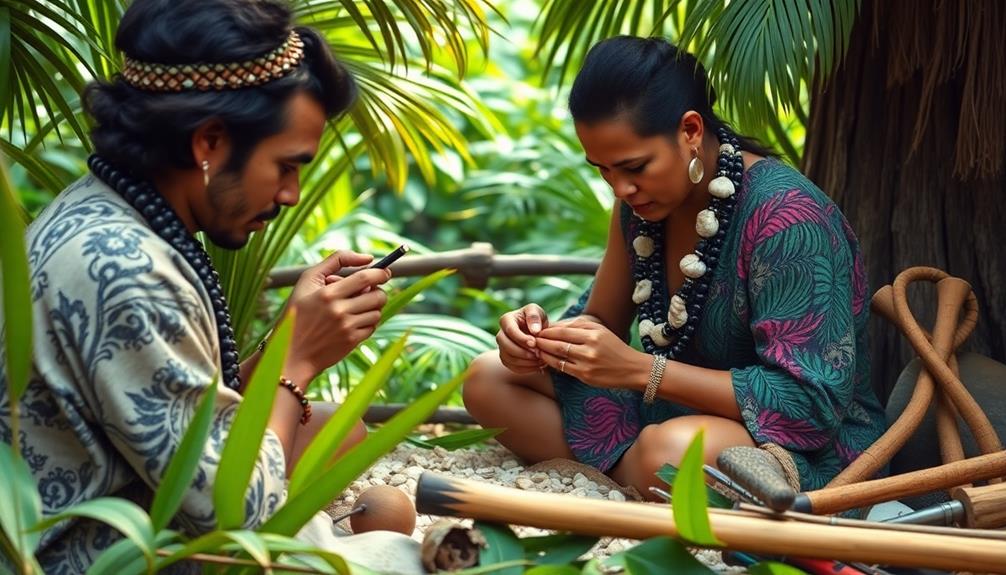
When exploring Polynesian piercings, you'll notice the use of natural materials like bone and shell that connect deeply to the culture.
The techniques employed for piercing were precise, utilizing tools crafted from local resources to guarantee clean punctures.
Additionally, the craftsmanship behind the jewelry often reflected intricate designs that held personal and social significance.
Traditional Materials Utilized
In traditional Polynesian societies, body piercings often reflect a deep connection to the local environment and cultural identity through the materials used. The traditional materials sourced from nature, such as bone, shell, and wood, play an essential role in the significance of body modification. Each piece of jewelry often features intricate designs that showcase the artistry and heritage of the culture.
- Bone: Used for its durability and connection to ancestral practices.
- Shell: Items like mother-of-pearl create stunning earrings and pendants, emphasizing the artistry involved.
- Wood: Carved into unique shapes, wood reflects specific cultural symbols.
These materials convey cultural significance, as they hold meanings tied to identity and heritage. For instance, designs representing honu (turtle) or hibiscus flowers are more than decorative; they symbolize important aspects of Polynesian life and beliefs.
The preservation of these traditional materials and the techniques used to create them highlights the ongoing relevance of body modification, linking past and present practices. By understanding these materials, you gain insight into the rich cultural tapestry that shapes Polynesian identity today.
Piercing Techniques Employed
Traditional piercing techniques in Polynesian societies showcase a blend of skill and cultural significance, utilizing natural materials like sharpened shells and bones to create precise openings in the skin. These techniques are often performed during significant rites of passage, marking important milestones in a person's life. Passed down through generations, the methods guarantee both safety and cultural adherence, reflecting the deep-rooted traditions of the community.
Before the actual piercing, practitioners frequently used plant-based dyes and pigments to mark the skin, adding a decorative and symbolic layer to the process. This preparation not only enhances the aesthetic appeal but also reinforces the spiritual connection to the ritual.
In many instances, multiple piercings are created in a single session, emphasizing the communal aspect of the experience. Family and community members often gather to support the individual, enriching the spiritual significance of the moment.
Jewelry crafted from bone, shells, or wood is typically used in traditional Polynesian piercings, further highlighting the connection to nature and ancestral heritage. Each piercing serves as a reminder of identity, belonging, and the cultural narratives woven through the fabric of Polynesian life.
Cultural Craftsmanship Methods
Across Polynesian societies, craftsmanship in body jewelry reflects a rich blend of artistry and cultural significance. When you explore the world of traditional body modifications, you'll find that artisans rely on locally sourced materials like bone, shell, and wood. These elements not only highlight the natural resources available but also deepen the connection to the environment.
Polynesian jewelry design employs various techniques, including:
- Hand-carving exquisite motifs like honu (turtle) and hibiscus, symbolizing cultural heritage.
- Weaving intricate patterns that showcase skill and creativity.
- Utilizing sharpened tools made from shark teeth or bamboo for piercing, demonstrating resourcefulness.
Through generations, artisans have preserved traditional methods while adapting to contemporary styles. This emphasis on cultural craftsmanship guarantees that each piece of jewelry carries profound meaning and aesthetic beauty.
Gender Roles in Piercing Practices

Piercing practices in Polynesian societies reveal how gender roles shape cultural expressions and social status. In these communities, men typically undergo more extensive body modifications, which symbolize strength and elevate their social status. You'll notice that their piercings often coincide with significant rites of passage, marking their change into adulthood and the responsibilities that come with it.
Conversely, female piercings tend to be simpler, such as earlobe and nose piercings, reflecting ideals of beauty, modesty, and marital status. When women receive piercings, it often occurs during marriage ceremonies, enhancing their status within the family and community while aligning with cultural expectations of femininity.
These gender dynamics in piercing practices reinforce societal norms, with each gender expected to adhere to specific traditions that resonate with their roles. By observing these practices, you gain insight into the cultural significance of piercings, highlighting how they serve as both personal expressions and markers of social identity.
Therefore, piercing practices in Polynesian societies not only celebrate individual milestones but also underscore the intricate relationship between gender roles and cultural heritage.
Influence of Modernization
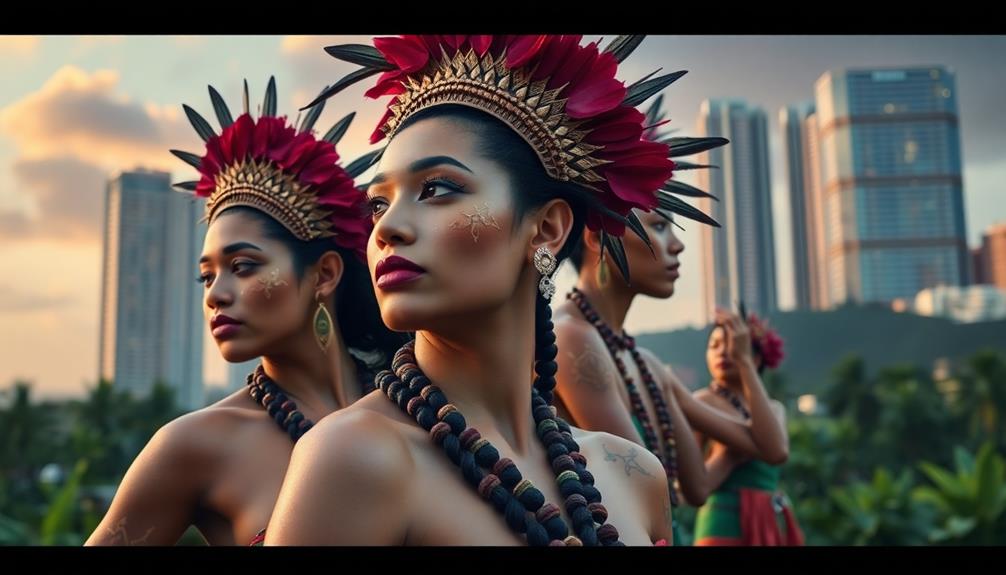
Modernization has significantly transformed piercing practices in Polynesian societies, blending age-old traditions with contemporary fashion trends. This shift often diminishes the cultural significance that these piercings once held. You might notice that the introduction of Western beauty standards has led some Polynesian individuals to adopt piercings purely for aesthetics, overshadowing their original spiritual meanings.
- Increased globalization spreads piercing trends, making traditional practices less visible.
- Commodification through tourism raises issues of cultural appropriation.
- Younger generations seek to revive traditional practices to reconnect with their heritage.
As you observe these changes, it's essential to recognize the impact of modernization on the ways piercings are perceived. While some embrace contemporary styles, others endeavor to honor their roots and the deeper meanings behind these body modifications.
The ongoing dialogue around cultural appropriation highlights the importance of respecting the origins and significance of traditional piercings. Ultimately, traversing this blend of modern aesthetics and cultural heritage is a balancing act that many Polynesian individuals are currently facing, as they explore their identities in a rapidly changing world.
Preservation of Cultural Heritage
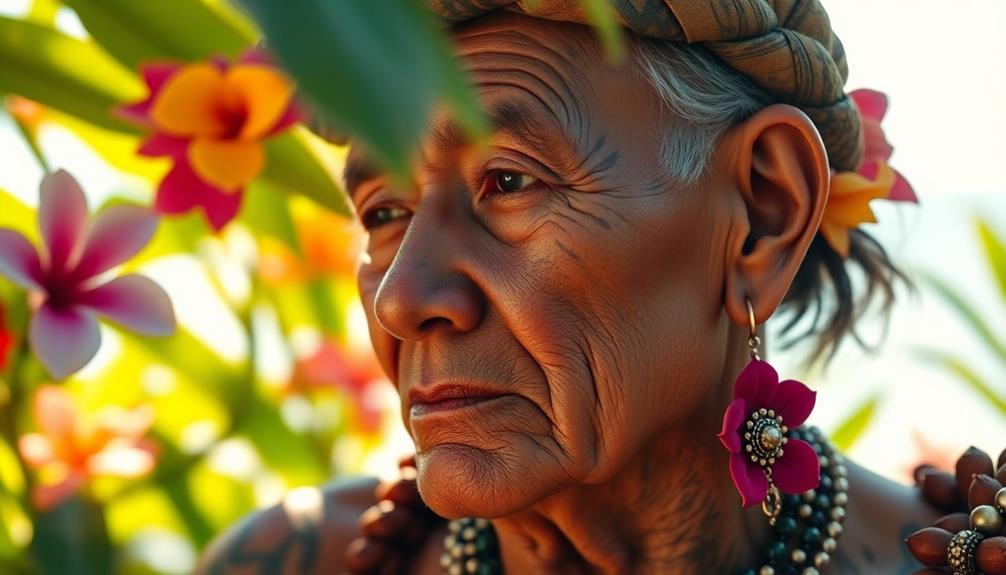
In the heart of Polynesian societies, traditional body piercings serve as crucial symbols of cultural identity and heritage. They signify social status and convey family lineage within these communities. Each piercing often marks significant life events and rites of passage, reinforcing community bonds and ensuring the transmission of cultural values to younger generations.
As globalization spreads, the resurgence of traditional piercing practices among contemporary Polynesian youth showcases a growing appreciation for ancestral customs. You'll notice how these young individuals seek to reconnect with their roots, embracing the unique designs and materials—like bone and shell—that are important to the preservation of cultural heritage.
These elements reflect the artistry and craftsmanship of their society, making each piece a narrative of history.
Moreover, educational initiatives play a critical role in fostering respect and understanding both within and outside the community. By raising awareness about the cultural significance of traditional Polynesian piercings, you contribute to the preservation of cultural heritage.
This effort not only honors past traditions but also strengthens the identity of future generations, ensuring that the essence of traditional Polynesian societies continues to thrive.
Contemporary Perspectives on Piercings
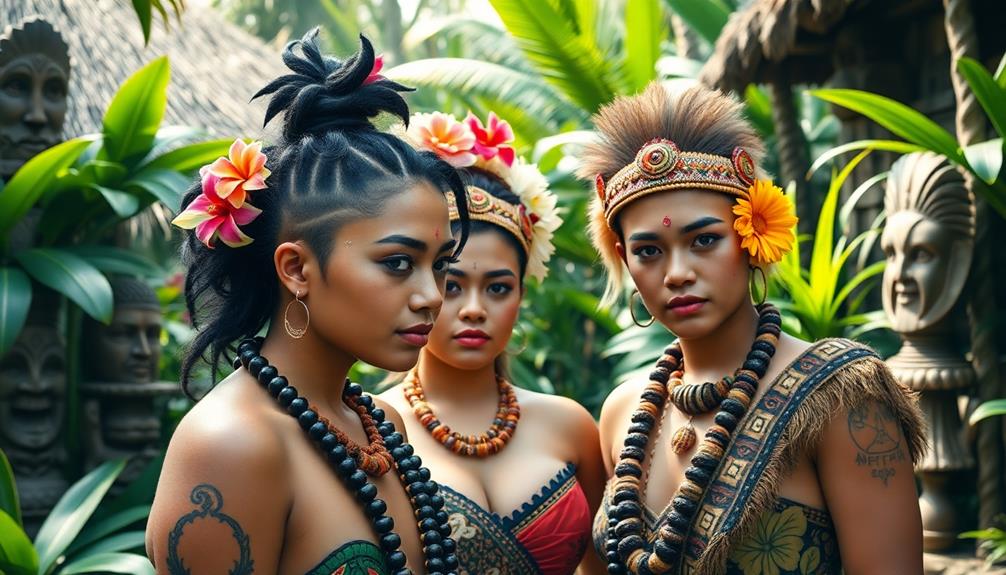
Traditional body piercings continue to evolve in contemporary Polynesian societies, blending cultural significance with personal expression. Today, many Polynesians embrace piercings as a way to honor their heritage while also showcasing their individuality. This fusion reflects a growing appreciation for traditional practices alongside modern aesthetics.
You might find that:
- Piercings hold deep personal and familial meanings, often telling stories that connect individuals to their roots.
- Many younger generations actively seek to revive sacred piercing practices, fostering a renewed sense of cultural identity.
- Ongoing conversations about cultural sensitivity and respect emphasize the importance of understanding the traditional meanings behind these body modifications.
As you explore contemporary views on piercings, it's clear they serve as a powerful form of self-expression.
However, it's crucial to navigate this space with awareness, recognizing that these symbols often carry significant cultural weight.
By honoring their significance, you contribute to a dialogue that respects the traditions while allowing for personal narratives to emerge.
In this way, piercings become not just adornments but fundamental expressions of identity within the rich tapestry of Polynesian culture.
Frequently Asked Questions
Did Polynesians Have Piercings?
Yes, Polynesians did have piercings. They commonly adorned themselves with ear and nose piercings, using jewelry to express social status and tribal identity. This practice connected them to their heritage and cultural traditions.
What Is the Cultural Significance of Piercings?
Piercings often carry deep cultural significance, representing identity, heritage, and social status. They mark important life changes and reinforce community bonds, connecting you to your ancestors and the spiritual domain through meaningful modification.
What Do Piercings Symbolize?
Piercings symbolize personal identity, cultural belonging, and significant life milestones. They can represent maturity, social status, or heritage, each marking your journey and connection to both your community and ancestral traditions, enhancing your sense of self.
What Do Piercings Mean in African Culture?
You might think piercings are just fashion statements, but in African cultures, they symbolize maturity, beauty, and social status. They connect you to your ancestors, marking important life milestones and offering spiritual protection.
Conclusion
In exploring the vibrant tapestry of traditional Polynesian societies, you've seen how piercings weave through history, culture, and identity. Like the intricate tattoos of the islands, these adornments tell tales of heritage and personal stories. As modernization nudges these practices, the essence of their significance remains—a reminder of who we are and where we come from. Just as the ocean shapes the shore, so too do these piercings shape the spirit of a culture rich in tradition.






